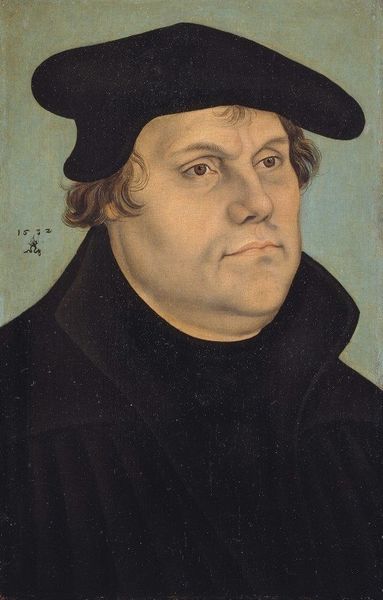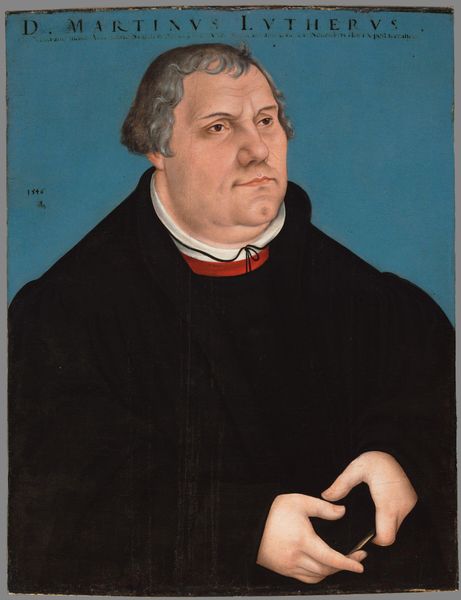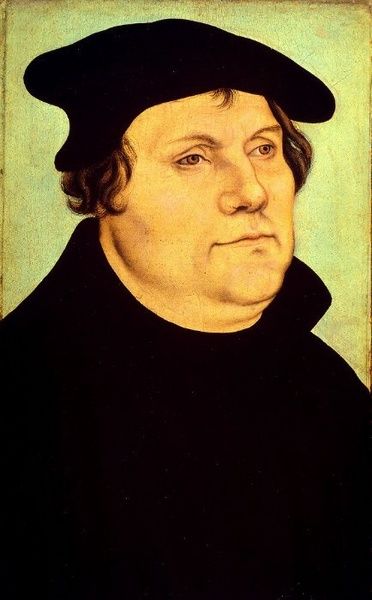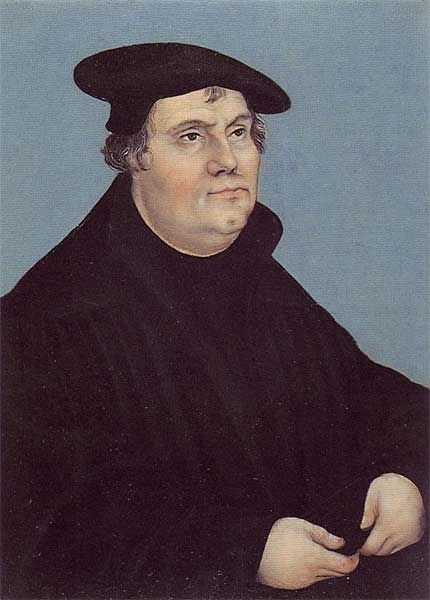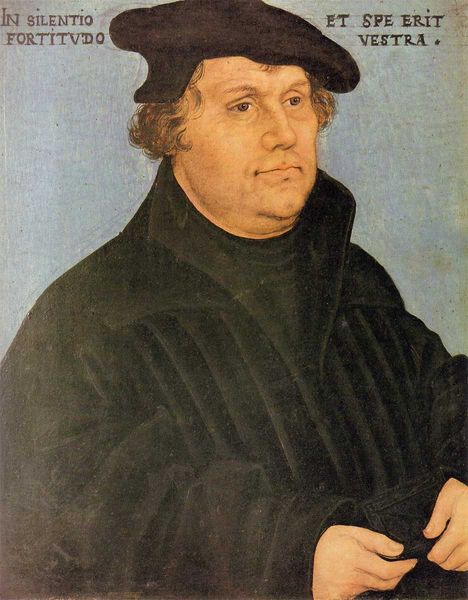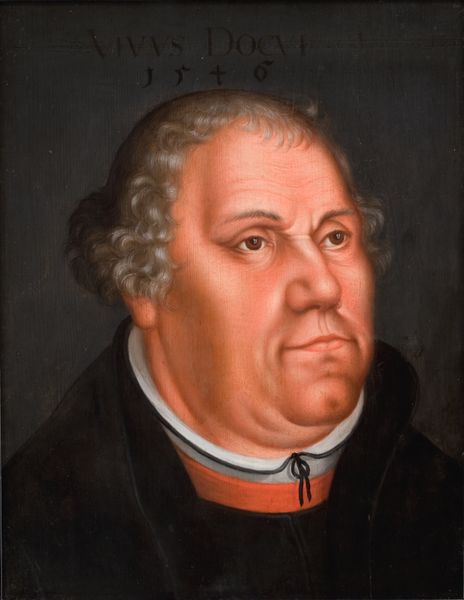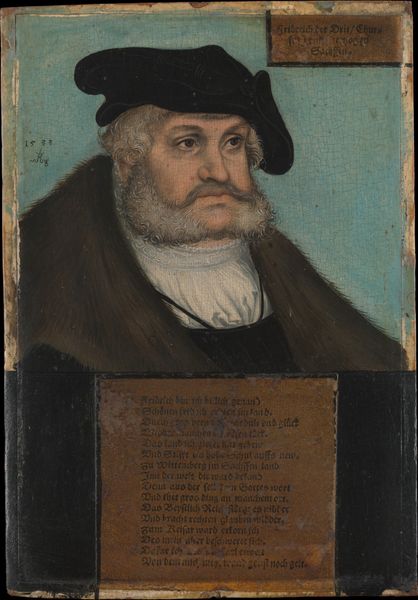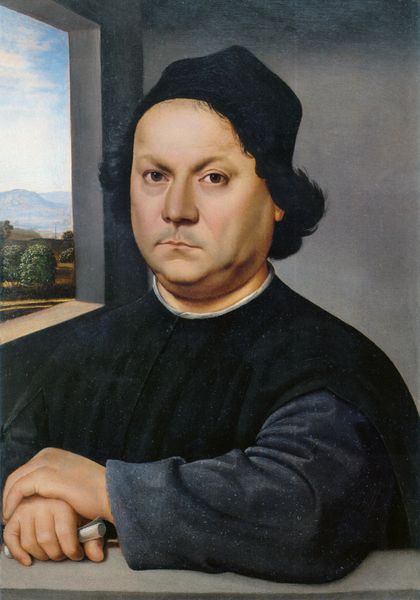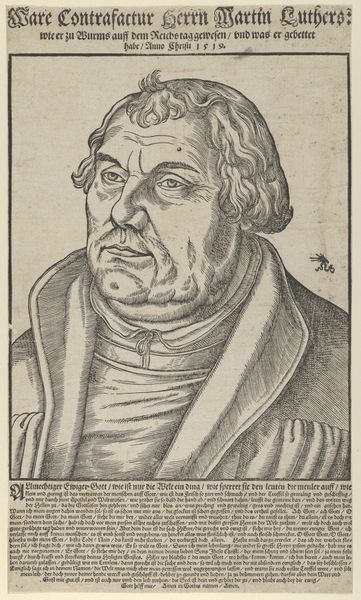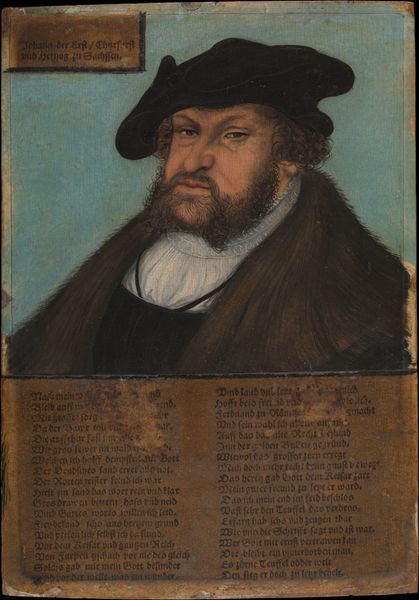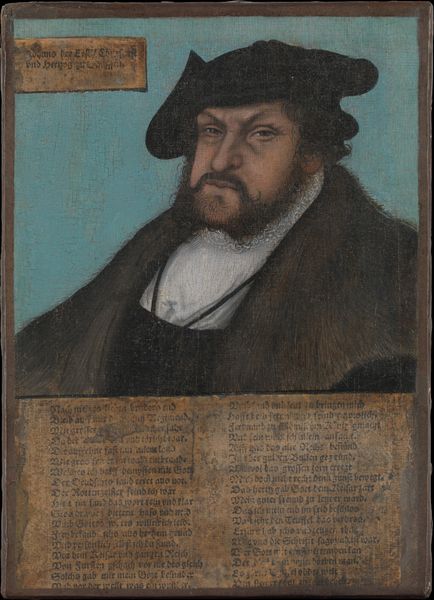
Dimensions: 13 1/8 x 9 1/8 in. (33.3 x 23.2 cm)
Copyright: Public Domain
Curator: Standing here, I’m immediately struck by the starkness. He’s so plainly dressed, almost austere against that light blue backdrop. Editor: That’s Lucas Cranach the Elder's portrait of Martin Luther, painted in 1532. A critical moment, given what Luther represented to the religious and political landscape. Curator: Absolutely. The somber attire then is telling us something; the plain black garb is a rejection of worldly pomp and circumstance, but the slight fur trimming around the neck subtly whispers of status. Look at that slight, almost knowing upturn of the lips, too. What do you make of it? Editor: That Cranach made several portraits of Luther certainly shaped this image. There’s a powerful iconography at play, crafted and circulated to promote the Reformation cause. This wasn't just a painting; it was propaganda. How much of that comes through to you? Curator: Propaganda implies manipulation, perhaps, but it can also indicate conviction. This face, subtly lit, almost glows against the dark robes; the calm demeanor speaks volumes about his beliefs. I detect a quiet defiance in those eyes. The slight cast shadow adds to the man's gravitas, doesn't it? Editor: Well, the portraits themselves helped normalize Luther's image for the masses. The distribution of prints after this painting meant his ideas reached wider audiences, influencing everything from religious thought to social structures across Europe. Curator: I see what you mean. He becomes a recognizable archetype through images like this, standing as an inspiration for his followers but as a contentious figure for others. Editor: Exactly. A key tool in a period of immense religious and political upheaval. Looking closely, you see an exercise in controlled, strategic representation. And the use of oil paint contributed, I suspect, to that refined projection of power, ensuring its legacy. Curator: Reflecting on the enduring impact this image, you really understand how an image of one person can shift and become an inspiration through generations. Editor: Indeed. Considering how Martin Luther continues to be represented shows how his figure is still up for reinterpretation today.
Comments
No comments
Be the first to comment and join the conversation on the ultimate creative platform.
